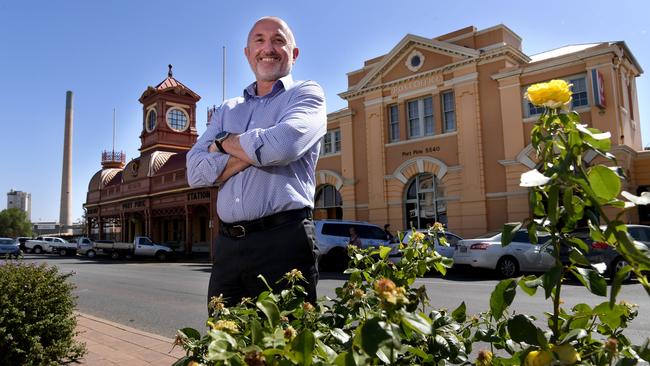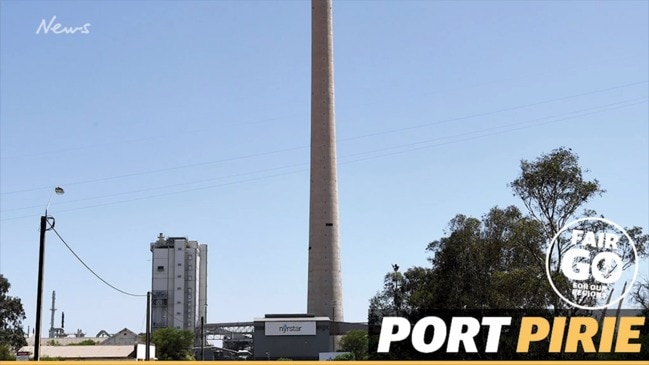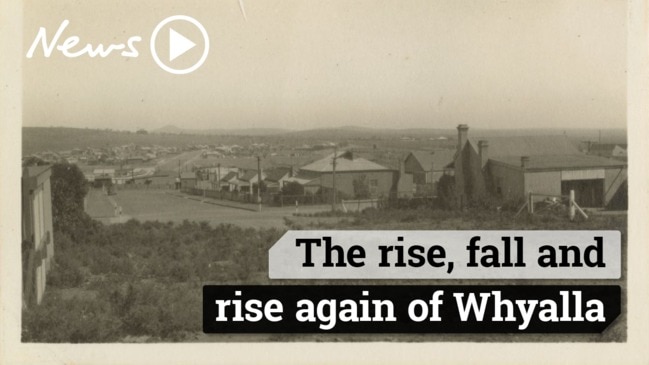Community leaders call for State Government help to stop South Australia’s regional ‘brain drain’
Regional communities want a major cash injection to keep their brightest youngsters in rural SA, and believe new infrastructure, planning changes and more government offices outside Adelaide will help spearhead growth and combat ‘brain drain’.

SA News
Don't miss out on the headlines from SA News. Followed categories will be added to My News.
- Port Pirie celebrates $24m new sports complex nearing completion
- Port Pirie smelter owner Nyrstar at risk of defaulting on $290m debt
- Coober Pedy: 10pc rate rise an option to deal with council debt
Regional communities want a major cash injection to keep their brightest youngsters in rural SA, and believe new infrastructure, planning changes and more government offices outside Adelaide will help spearhead growth and combat ‘brain drain’.
Community leaders across the state say the lure of education and better work opportunities in Adelaide is robbing them of young minds — and is leading to an ageing and in some cases, stagnant or declining population in the regions.
Port Pirie Mayor Leon Stephens said more work was needed to help encourage diverse industry growth outside of Adelaide.
“We’re seeing the city’s growing further and further north,” Mr Stephens said.
“(But) we have very cheap land and an abundance of labour.
“We’re forecasting two per cent (annual) growth but it would be nice to have 10-15 per cent.
“Two per cent is not going to cut the mustard and keep the kids employed and staying here.”
Census data commissioned by The Advertiser found almost a third – 22 of 69 – local government areas in SA saw a decrease in people between 2006 and 2016.
Some regional parts of South Australia have seen population drops of up to almost 20 per cent in the past 10 years.

Mr Stephens said the Upper Spencer Gulf councils – Port Pirie, Port Augusta and Whyalla – were trying to move away from being reliant on single employers in their towns.
“We’re going to lose 120 jobs at Nyrstar in 2019 and if people had other employment available I’m sure those people would have taken it,” he said.
Mr Stephens said better planning was needed to direct major industrial developments to regional areas.
He suggested people with intimate knowledge of the state’s regions should have a place on the state’s development assessment panel.
Port Pirie Council chief executive Peter Ackland hoped developments such as a university hub, which began hosting courses in January, and new $24 million sports complex, would help draw more people to his town.
Coober Pedy’s acting chief executive Colin Pitman said young people were moving away from the opal mining town in search of work.
“Teenagers usually get trained in regional centres … and most of them enter professions which are not useful here so they move out,” Mr Pitman said.
“Sometimes when they get older the whole family leaves, so there are a lot of properties that are rented or unoccupied because those people have moved.”
The tourism sector was growing but it was a “boom-bust” cycle, which only brought opportunities during the milder months.
Mr Pitman said staff had already found Northern Adelaide Plains producers interested in setting up operations in Coober Pedy.
But it first needed to spend about $19 million fixing the district’s ailing water system, which would require state and federal government funding.

Northern Areas Council chief executive Colin Byles said more must be done to help deliver extra employers to the regions, including decentralising government agencies and services.
Limestone Coast Regional Development Australia chief executive David Wheaton believed TAFE SA had a greater role to play in training and retaining regional staff.
Too often, employers had to send staff to Adelaide to further their skills.
“We’re of the strong opinion, like the health boards which have returned locally that needs to happen in TAFE as well, so there’s local accountability for decisions made,” Mr Wheaton said.
Regional Development Australia Whyalla Eyre Peninsula chief executive Dion Dorward feared communities were at risk of losing major business investments if populations continued to decrease.
“What we’re all furiously trying to avoid is getting in a situation of losing investment because we don’t have the workforce with the right skills and capacity available,” Mr Dorward said.
“In the southern Eyre Peninsula we’ve had some reasonable growth, but above that we’ve had a decline, so our actual population growth since 2001 has been roughly half-a-per-cent – it’s negligible.”

Mr Dorward said investment in social and digital infrastructure, such as the NBN, would help cater for the needs of a “modern person” when recruiting for jobs in the country.
Business SA chairwoman Nikki Govan said one of the biggest impediments to regional growth was a lack of people with the skills in demand.
More effective migration policies were needed.
“What is often raised with Business SA is not just the difficulty in attracting skilled people … but the ability to accommodate the careers of a partner when there is often limited diversity of job options,” Ms Govan said.
Primary Industries and Regional Development Minsiter Tim Whetstone said the Government was focused on strengthening the regions through infrastructure development, opening new export markets and growing population in the bush.
Response from Primary Industries and Regional Development Minister Tim Whetstone:
The Marshall Liberal Government is continuing to bring down the cost of doing business in South Australia and pitching to investors the significant advantages of being based in regional South Australia.
The Government has already reduced the Emergency Services Levy and slashed payroll tax for 3,200 small businesses across South Australia, which will encourage greater investment and drive growth.

We now have a government in South Australia which puts regional South Australia at the forefront. Every day our regional MPs are working on behalf of their communities to assist in growing their local economy.
One area that I constantly receive feedback on when I’m out in the regions is the need for more skilled labour. That’s why this Government committed funding for 20,800 apprenticeships and traineeships, which will ultimately provide career opportunities and keep young people in our regional communities.
We have already established the $150 million Regional Growth Fund to unlock economic activity in our regions, to deliver critical infrastructure to create direct benefits across regional industries, and to strengthen regional communities.
In the first year of government we’ve already seen several projects receive growth fund grants which will provide an economic stimulus and grow jobs in the regions.
Under the former Labor Government far too many frontline services had a city-centric approach. Our priority is making sure South Australians across the state have access to the services they need, where and when they need them.
This Marshall Liberal Government is focused on strengthening our regions through infrastructure development, opening new export markets for our businesses and growing population in our regional towns.
Our primary industries are the state’s largest export sector, accounting for over half the state’s merchandise exports, and a major employer.


